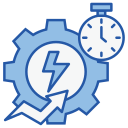
Find Your Focus: Minimizing Distractions at Home
Chosen theme: Maximizing Focus and Minimizing Distractions at Home. This is your welcoming space to sharpen attention, design calmer routines, and create a home environment where deep work feels natural. Join us, share your wins and struggles, and subscribe for weekly insights that keep your focus strong.
The Psychology of Staying Focused at Home
Every notification, open tab, and passing thought spends a little of your mental budget. Single-tasking and batching similar work reduce switching costs, letting you conserve attention for high-impact tasks. Share your biggest attention drains below, and subscribe for more research-backed, real-life strategies.
The Psychology of Staying Focused at Home
We tend to do what our environment invites. A tidy desk, pre-opened document, and water within reach nudge you into action without debate. Try setting three tiny cues tonight, then report back tomorrow about which cue pulled you into flow fastest.
The Psychology of Staying Focused at Home
A reader finished her thesis after swapping the dining table for a narrow desk facing a blank wall. She set a kitchen timer, silenced apps, and told roommates her ‘red mug’ meant do-not-disturb. Two weeks later, she submitted early. What’s your simple signal?
Layout That Channels Attention
Face away from foot traffic and screens unrelated to the task. Keep only today’s materials visible; store everything else out of sight. A neutral backdrop prevents visual noise, while a single plant softens the space. Post your workspace photo and tag one tweak you’ll test this week.
Sensory Boundaries: Light, Sound, Temperature
Bright, indirect light boosts alertness; warm light suits late evenings. Use soft noise, noise-canceling headphones, or door seals to tame sound. Keep a cozy layer nearby to avoid temperature distractions. Comment with your favorite soundscapes, and subscribe for our curated focus playlist drops.


Rituals and Routines That Trigger Deep Work
Choose a three-step launch sequence: fill water, open the document, start a 50-minute timer. Repetition creates a Pavlovian response where the sequence itself kickstarts focus. Share your personal sequence in the comments so others can borrow and adapt it for their home setup.
Rituals and Routines That Trigger Deep Work
Short, intense focus sprints reduce procrastination. Try 25, 40, or 50 minutes, with a deliberately small target like 200 words or one spreadsheet block. Ending on a win makes the next sprint easier. Subscribe for our weekly sprint challenges and compare your streak with the community.



People, Pets, and Polite Boundaries at Home
The Household Focus Pact
Draft a simple pact: signal, quiet hours, urgent exceptions, and shared break times. Keep it visible on the fridge. When everyone participates, distractions drop without resentment. Share your pact template or ask for ours by commenting ‘PACT’ below, and we’ll send a printable version.
Visual Signals That Actually Work
Use a door sign, lamp color, or headphones as a clear do-not-disturb signal. For open spaces, a tabletop sign does wonders. Train the household to honor the signal except for emergencies. Tell us which signal you’ll try, and return tomorrow with your results.
Kid and Pet Strategies That Reduce Guilt
Prepare a ‘focus basket’ of engaging activities for kids and puzzle feeders for pets. Pair your sprints with their independent time, then reward shared breaks afterward. You’ll protect attention and connection. Comment with your best activities, and we’ll compile a community guide.

This is the heading
Lorem ipsum dolor sit amet, consectetur adipiscing elit. Ut elit tellus, luctus nec ullamcorper mattis, pulvinar dapibus leo.

This is the heading
Lorem ipsum dolor sit amet, consectetur adipiscing elit. Ut elit tellus, luctus nec ullamcorper mattis, pulvinar dapibus leo.

